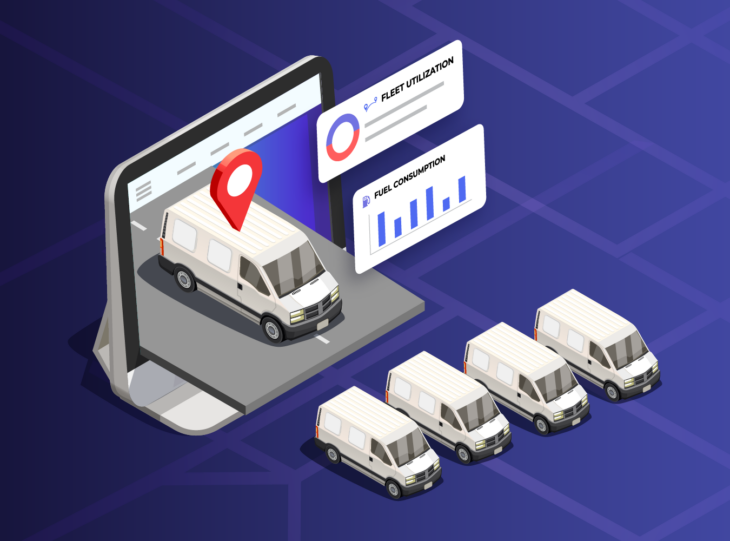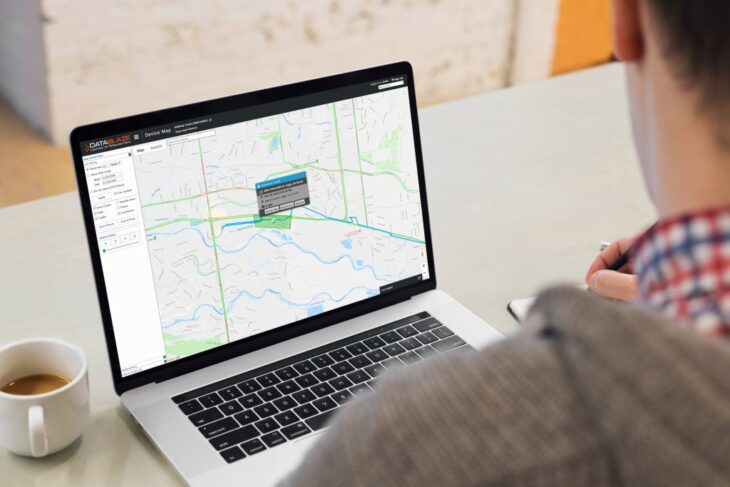Fleet insurance is a serious concern for fleet managers. Fleet management has become an increasingly important issue in the wake of rising fuel costs.
The soaring cost of fleet insurance premiums can present a serious obstacle to fleet managers who are trying to maintain profitability without sacrificing safety or performance standards.
Fortunately, there are ways fleet telematics can be used in order to reduce fleet insurance premium costs and make it possible to offer competitive rates while avoiding any increase in risk. We will discuss 8 proven ways in which fleet telematics can reduce fleet insurance premium costs below.

Source: emaxxgroup.com
Contents
What is Fleet Telematics?
Fleet telematics is the practice of using fleet vehicle data to improve fleet safety and efficiency. This technology can significantly enhance fleet management by allowing fleet managers to observe, analyze, and influence fleet performance for better decision-making.
There are many different fleet telematics devices available today, including GPS fleet tracking devices, fleet management software, and fleet safety devices such as speed limiters. There is also fleet telematics hardware that supports both fleet management and fleet safety solutions in one device.
The following is a list of 8 proven ways in which fleet telematics can reduce fleet insurance premium costs:

Source: frost.com
1. Improve Driver Performance
As a fleet manager, your drivers are your most valuable assets. For lowering insurance premiums, your employees must stay attentive behind the wheel. Regular training and setting clear expectations for employees can help to minimize traffic accidents.
Fleet telematics can help fleet managers improve driver performance by providing feedback on driving habits. Fleet managers can use fleet vehicle data to monitor driving behavior and observe deviations from normal driving activities and provide coaching or discipline as needed.
This type of feedback can help fleet managers identify risky driving behaviors and address them before they lead to an accident.

Source: autowiz.in
According to the National Highway Traffic Safety Administration, fleet fatalities have gone up by nearly 50% since 2009.
By equipping fleet vehicles with fleet vehicle telematics devices and fleet management software, fleet managers can help minimize unauthorized use of fleet vehicles and improve fleet security in general.
Unauthorized use of fleet vehicles is a serious risk to fleet safety and can lead to costly accidents. Fleet telematics can help fleet managers track fleet vehicles in real-time, making it easier to identify unauthorized use and take corrective action.

Source: opensesame.com
3. Lower CSA (Compliance, Safety, Accountability) Scores
The Compliance, Safety, Accountability (CSA) program is a safety management system launched by the United States Federal Motor Carrier Safety Administration in 2010. The goal of the CSA program is to improve the safety of the nation’s commercial motor vehicle fleet by identifying and addressing safety issues.
Fleet telematics can help fleet managers lower fleet CSA scores by providing fleet managers with fleet vehicle data that can be analyzed and used to rate fleet performance. This fleet vehicle data can be used to identify poor driving habits, fleet accident risks, fleet maintenance issues, and other fleet safety concerns.

Source: inzata.com
4. Enhance Driver Safety
As a fleet manager, your number one priority is to keep drivers safe on the road, which means proactive fleet management is key to reducing fleet accidents and maintaining good CSA scores.
Using fleet telematics devices and fleet management software, fleet managers can identify risky driving behaviors which could lead to accidents and use fleet performance data to improve fleet safety.
This type of data also allows fleet managers to develop specific safety programs and policies tailored to the needs of their fleet.

Source: revenuesandprofits.com
5. Maintain Compliance
In addition to fleet safety, fleet managers must also ensure compliance with a wide range of federal regulations. Most insurance organizations favor commercial entities that comply with federal and state laws.
By providing fleet managers with fleet vehicle data that can be analyzed for specific regulatory requirements, fleet telematics can help improve fleet compliance.
Using this type of fleet vehicle data, fleet managers can identify risks and take corrective action that helps fleet managers improve fleet compliance and avoid costly fleet safety violations.

Source: carrealtime.com
6. Reduce Theft
Fortunately, fleet telematics can also help fleet managers prevent fleet theft.
A fleet vehicle’s location history is an asset that fleet managers should take full advantage of. This type of data can be used to track suspicious activities and monitor for unauthorized use or theft attempts.
Using this fleet vehicle data, fleet managers can pinpoint areas where fleet vehicles are most vulnerable to fleet theft, which helps fleet managers take steps to prevent fleet theft.

Source: envuetelematics.com
7. Collect Video Evidence
In today’s fleet management market, fleet managers have a wide range of fleet telematics options to choose from. This includes fleet vehicle video cameras.
Fleet video cameras can provide fleet managers with a video record of fleet vehicles’ activities and events that may be useful in the event of an accident or other fleet issue.
For example, fleet video cameras can provide fleet managers with video evidence of fleet vehicle accidents, which can help with accident investigations and insurance claims.

Source: einfochips.com
8. Generate Reports
Lastly, fleet telematics devices can be used to generate fleet management reports that fleet managers can use when analyzing fleet data.
Fleet managers can use these fleet vehicle reports to calculate overall fleet usage, track fleet fuel consumption and engine maintenance statistics, identify fleet safety violations, monitor fleet hours of service compliance status, assess fleet activity during specific times periods, and more.
Fleet telematics devices can help fleet managers save on fleet insurance premiums by providing fleet managers with data that can be analyzed to improve fleet safety, maintain compliance with federal regulations, and reduce fleet theft.
Using this data, fleet managers can take proactive steps to improve the safety of their fleet and avoid costly fines and violations.
ROI of Keeping Your Workers Safe on the Road
The ROI of keeping fleet drivers safe on the road is significant, as fleet insurance premiums are directly linked to fleet safety violations. Check the infographics below by Motor1 to know the ROI of keeping your workers safe on the road. This way, you can properly manage your fleet premiums to get the most out of your fleet insurance.

